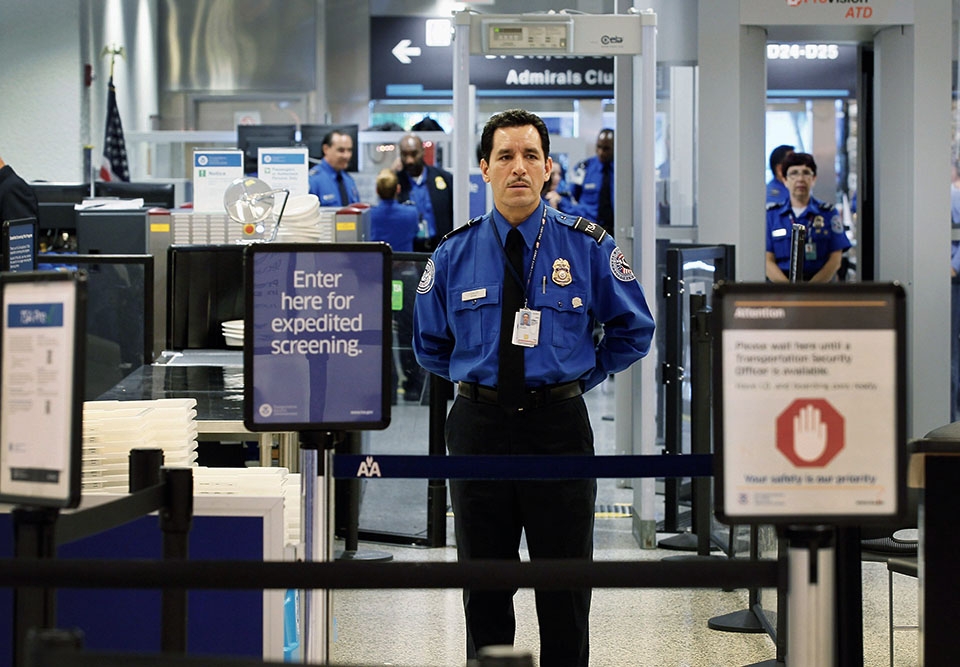
By Vince Gullo III | Staff Columnist
11/15/17
If you’ve ever traveled on an airplane, you’ve definitely gone through a Transportation Security Administration (TSA) screening. These screenings are, at the very least, unpleasantly tedious experiences. Between long lines, disgruntled workers, awkward pat downs and that constant unwarranted fear of accidentally ending up on the no-fly list, TSA screenings have garnered quite the reputation.
The only saving grace the screenings have is the fact that they are in place with the good intentions of making the world a safer place. Between their preceding reputation, extensiveness of their screenings, and the fact that we have not experienced a hijacking in recent years, one would be apt to believe that TSA screenings have been effective. Recent data shows that’s not the case. Homeland Security investigations have found that undercover officers have gotten through TSA with fake guns, knives and explosives at a 70 percent success rate. Think that’s alarming? You should feel encouraged by the improvement. Just two years ago, that success rate was at 95 percent.
When I first read this, I didn’t think it could possibly be real. Personally as an 18 year old college kid, I’ve had more crevices (in my bags and my body) checked than I probably deserved. I always assumed this extensively asinine procedure was extended to all future flyers, and by that thinking I never could have dreamed of a situation where anything malicious ever made it past TSA. Apparently I was wrong, way wrong. A 70% success rate with sneaking weapons through TSA is not only embarrassing given the decade and a half of effort TSA has put in to try and stop such items from getting through, but just utterly terrifying. This news is especially alarming given its timing. With the holiday season fast approaching, airports will be busier than ever, giving potential criminals more opportunity to commit such crimes.
The feelings of alarm are shared not only by consumers, but politicians, too. D.N.Y. Sen. Chuck Schumer is calling for a “top to bottom” review of the entire TSA after the release of the investigation results.
“In an era of lone wolf terrorists, the continued TSA security failures at airports across the country are highly concerning and a major threat we must neutralize… TSA should move immediately to address all holes, shortfalls and gaps in training procedures, technology, and the entire airport security process,” Schumer said in an interview with the Daily News.
The point Schumer makes about “lone wolf terrorists” is important to realize. When it comes to airplane hijackings, it only take one armed or two armed assailants to do catastrophic damage, which is why even a 1 percent success rate would be alarming. A 70 percent success is hard to even conceive.
Improvements are looking to be made, however. TSA said in a statement reported by CBS that it took the findings “very seriously and are implementing measures that will improve screening effectiveness at checkpoints.” Part of these measures include improving the current scanners with CT technology in them. Although they are implemented at some airports, TSA said they simply don’t have enough funds for widespread implementation. To speed up this process, even American Airlines have purchased some CT scanners to make them more commonplace. The new scanners are long overdue. The initial TSA pilot program for CT technology, which was planned to begin last year, just began this summer. In a time when airport security should be paramount, there should be no realistic excuse for the slow implementation.
Frank Cilluffo, a former director of the Homeland Security advisory council, emphasizes the fact that when it comes to airport security, there cannot be any cracks in the seal.
“They’re looking for vulnerabilities that can be exploited, and we need to make sure that we can push that as far as we can to minimize the risk,” Cilluffo stated, as reported by CBS.
I suppose that any action is better than no action, but isn’t this conversation a little ridiculous to be having at all at this point? 9/11 happened 16 years ago, which is the same amount of time that the TSA has been around. One would think that after 16 years of research, development, and the trial and error process TSA would have a more effective screening procedure.
Almost everyone has had personal experiences or at least heard of stories where people being forced to leave behind the most seemingly benign objects for the sake of “safety.” While items such as gel shoe inserts and snow globes are banned, hidden weapons and explosives can be brought through with ease. These recent findings will most certainly make some people, at the very least, apprehensive to fly any time soon. If airline companies see their bottom line being affected, they undoubtedly would look to take action of some sort.
Being at school a decent distance away from home, I’ve already flown home once, and I plan on doing it again. Although this investigation won’t stop me from flying again, I will certainly be more apprehensive as I’m going through TSA. I believe this will be the mentality of most future flyers. Unfortunately, like with many things, it will likely take a tragedy of some sort for any proactive action to take place.



